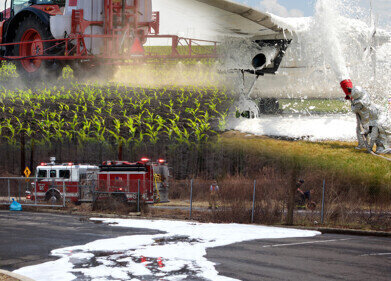Groundwater monitoring
A Guide to Water Quality Standards
Jun 30 2019
Given that it’s such a fundamental cornerstone of human life, it’s logical there are a number of regulations and directives in place surrounding water quality in the UK and beyond. Indeed, the Water Framework Directive (WFD) requires that all EU states not only monitor and safeguard the current state of their waterways, but set targets to improve them in the future. These objectives are updated every six years to ensure continued progress.
Water quality standards
In the UK, there are different regulations in place to monitor water quality in the different parts of the country. The Environment Agency is in charge of maintaining water standards in England, while the Scottish Environment Protection Agency (SEPA) is responsible in Scotland, Natural Resources Wales (NRW) looks after the task in Wales and the Environment and Heritage Services (EHS) are the relevant body in Northern Ireland.
British water quality standards have been implemented with the WFD in mind. In addition to ensuring that rivers, lakes and other waterways do not exceed legal limits for harmful contaminants, the standards are also designed to regulate the healthiness of fish living in the water and the quantity of groundwater in certain areas of the country.
Keeping supplies safe
Of course, in order to maintain these high standards, the relevant authorities must ensure that businesses wishing to operate in the UK do not jeopardise the quality of national water supplies by discharging contaminated effluent into the water. As a result, any company which wishes to engage in a water discharge activity or groundwater activity must apply for and receive an environmental permit prior to beginning operations.
Discharge activities are defined as those involving the discharge of noxious, polluting or poisonous solid or liquid waste matter into any waters within UK territory. This include freshwaters found inland like lakes and rivers, coastal waters like bays and beaches and any other waters which fall within the boundaries of UK territory. Groundwater activity is a looser definition but broadly includes doing the same onto firm land, where the discharge could seep into the ground via soil.
Technology to the rescue
The best way for a company to ensure they are complying with their legal obligations and to obtain an environmental permit is to use modern monitoring equipment which can provide a detailed insight into the composition of their effluent discharges. This will equip them with the proof they need to show the relevant authorities listed above that their activities will not compromise local water quality in the area.
The e-learning session Ion selective field transistors: highly versatile tools for accurate detection of ions in water - WWEM 2018 is a valuable source for learning more about some of the most sophisticated and advanced forms of this technology which can aid businesses to demonstrate their compliance with national and international water standards.
Digital Edition
IET 35.2 March
April 2025
Air Monitoring - Probe Sampling in Hazardous Areas Under Extreme Conditions - New, Game-Changing Sensor for Methane Emissions - Blue Sky Thinking: a 50-year Retrospective on Technological Prog...
View all digital editions
Events
May 06 2025 Nuremberg, Germany
May 10 2025 Karachi, Pakistan
May 11 2025 Vienna, Austria
May 11 2025 Seoul, South Korea
Salon Analyse Industrielle & Instrumentation
May 14 2025 Paris, France





.jpg)

_(4427399123)-(2).jpg)











